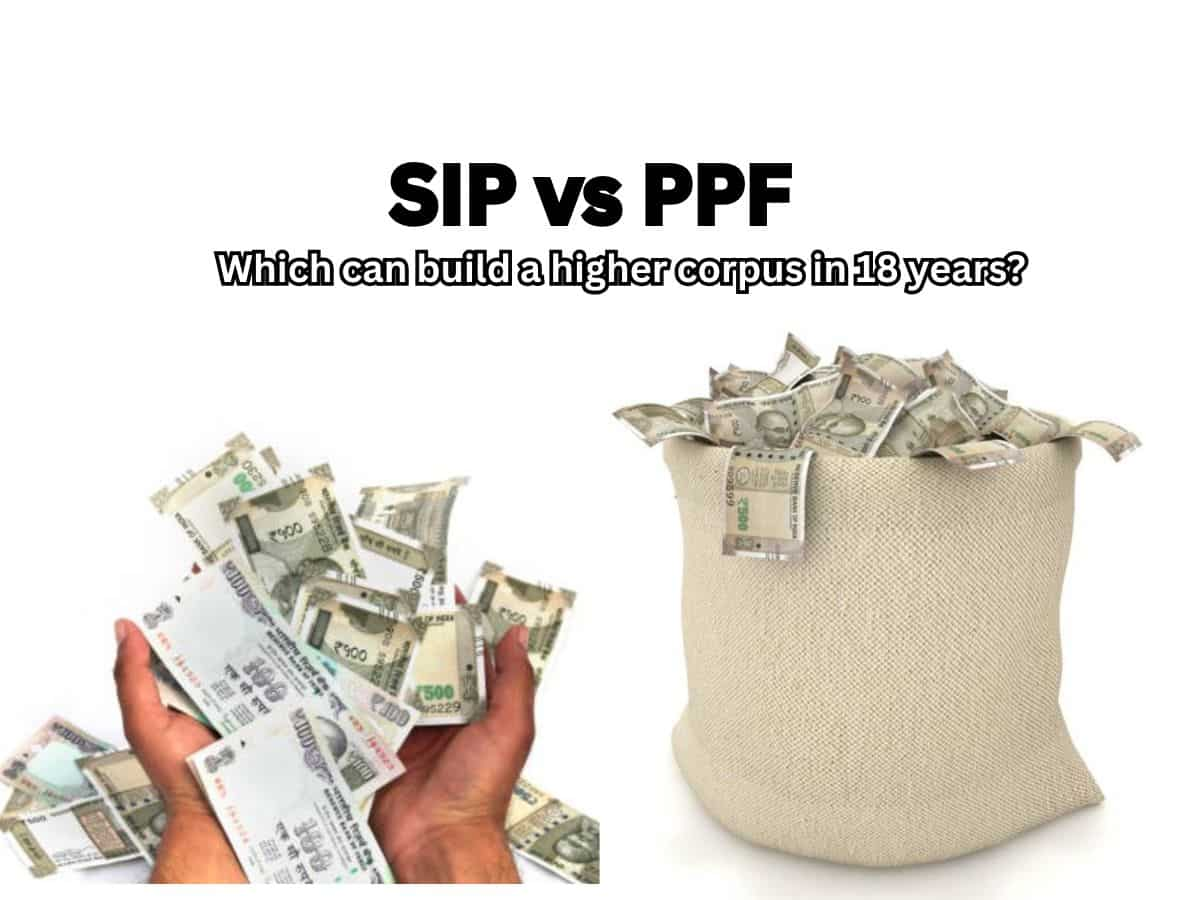A Public Provident Fund (PPF) is a government-backed investment option for risk-averse investors. Plus, it guarantees returns. However, the investment amount has a limit in this scheme, along with a lock-in period, whereas in SIP, there is no such bar. Systematic Investment Plan (SIP) and Public Provident Fund (PPF) are both popular investment options. Thus, let’s find out which can generate a higher corpus on an investment of Rs 1,40,000 per year in just 18 years.
Also read: SIP vs PPF with Rs 1,40,000/year investment: Which can create a larger corpus in 25 years?
SIP investment
With the help of a systematic investment plan, you can invest a fixed amount in mutual fund(s). Investors can go for daily, monthly, quarterly, or yearly investments in a mutual fund scheme. You can change the investment amount based on your financial circumstances.
Public Provident Fund?
PPF is a government-backed scheme that you can also use for portfolio diversification. Deposits up to 1.5 lakh in a year are eligible for tax exemptions under Section 80C of the Income Tax Act.
What is the minimum investment amount in SIP?
The minimum investment amount in SIP is Rs 100. You can also increase, decrease, or stop their SIP.
What is the minimum and maximum investment amount in PPF?
The minimum investment in a year is Rs 500, whereas the maximum investment in a year is Rs 1.5 lakh.
How does SIP work?
In a systematic investment plan, a fixed amount is automatically deducted from your bank account and invested in mutual funds. These investments happen regularly, and you get units based on the fund’s value (NAV).
How does PPF work?
This savings scheme, available at post offices and banks, allows you to make voluntary deposits. The Post Office version offers a 7.1 per cent annual interest rate, compounded yearly.
PPF calculation conditions: Rs 1,40,000/year investment for 18 years
- Yearly investment: Rs 1,40,000 (monthly investment Rs 11,666x 12 months)
- Period: 18 years
- Rate of interest: 7.1 per cent
PPF: What will be your retirement corpus in 18 years with Rs 1,40,000/year investment?
On a Rs 1,40,000/year investment, the retirement corpus in 18 years will be Rs 51,47,049. The estimated total interest during that time will be Rs 26,27,049.
SIP investment conditions
Since there are no fixed returns in SIP investment, we are calculating as per annualised returns of 8 per cent (debt fund), 10 per cent (equity fund), and 12 per cent (hybrid fund). We’re also assuming a monthly investment of Rs 11,666(1,40,000/12)
SIP: What will you get on Rs 11,666 monthly investment for 18 years (hybrid fund)
At 12 per cent annualised growth, the estimated corpus in 18 years will be Rs 83,03,026. During that time, the investment amount will be Rs 25,19,856, and capital gains will be Rs 57,83,170.
SIP: What will you get on Rs 11,666 monthly investment for 18 years (equity fund)
At 10 per cent annualised growth, the estimated corpus in 18 years will be Rs 67,24,259. The estimated capital gains will be Rs 42,04,403.
SIP: What will you get on Rs 10,833 monthly investment for 18 years (debt fund)
At 8 per cent annualised growth, the estimated corpus in 18 years will be Rs 54,67,249. The estimated capital gains will be Rs 29,47,393.
DISCLAIMER: Not financial advice; invest at your own risk
Anurag Dhole is a seasoned journalist and content writer with a passion for delivering timely, accurate, and engaging stories. With over 8 years of experience in digital media, she covers a wide range of topics—from breaking news and politics to business insights and cultural trends. Jane's writing style blends clarity with depth, aiming to inform and inspire readers in a fast-paced media landscape. When she’s not chasing stories, she’s likely reading investigative features or exploring local cafés for her next writing spot.






